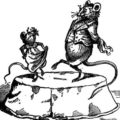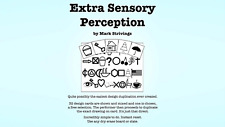
How we perceive someone touching us may depend as much on memory, attention and expectation as on the stimulus itself, say brain researchers from the Howard Hughes Medical Institute (HHMI) writing inNature Neuroscience.
Working with monkeys, the researchers – Ranulfo Romo and Victor de Lafuente – have found that the animals’ perceptions of touch match brain activity in the frontal lobe, an area that is thought to assimilate many types of neural information. This could help answer one of neuroscience’s most baffling questions – how the brain converts simple sensory inputs to complete perceptual experiences. It could also upset the long held theory that perceptions arise in the sensory cortices, which are the first areas of the brain to process information coming in from our sense organs.
They found that the activity in primary somatosensory cortex (S1) neurons, where touch information first arrives, correlated with the strength of the stimulus; when the strength of the vibrations was more intense, the S1 neurons’ fired more rapidly. However, these neurons’ activity did not correlate with the monkeys’ behavioral responses. Their firing rates were directly associated with the stimulus intensity, whether the monkeys consciously felt and responded to the stimulus or not.
The researchers also recorded neuronal activity in the medial premotor cortex (MPC), a region of the brain’s frontal lobe that is known to be involved in making decisions about sensory information. It was found that activity in this area did indeed mirror the monkeys’ subjective responses to the vibrating probe. MPC neurons responded in an all-or-none way; they fired when the monkey thought the vibrations were there – even if they weren’t – and they didn’t fire when the monkey thought the vibrations were absent – even if they were actually occurring.
Romo said that these findings indicate that the monkeys’ perceptions arise not from brain activity in the sensory cortex itself, but from activity in the frontal lobe MPC. “The MPC is very interesting,” Romo said. “Apparently, it’s able to pull information from memory and from the sensory areas, and also link this activity to the motor apparatus so that the monkeys can physically indicate what they think is happening.”
To further establish MPC’s association with the monkeys’ perceptions, the researchers used an electrode to apply weak electrical stimulation to MPC neurons. They found that stimulating these neurons made the monkeys more likely to respond that they perceived a vibration, whether the vibrating stimulus was occurring or not. Interestingly, the study also found that MPC neurons began to fire before the stimulus even touched the monkeys’ fingertips. The researchers believe that this is because the monkey is expecting the stimulus and the neurons fire in anticipation. “I think that we do not feel with our sensory cortices,” Romo concluded. “Perceptions instead arise in higher-order brain areas from a combination of sensation, attention, and expectation. “The sensory representation is [just] to confirm something that you have already thought.”


















Comments are closed.